
Code_Aster
®
Version
6.4
Titrate:
SDLD325 - Transitory dynamic response of a system mass-arises
Date:
16/02/04
Author (S):
E. BOYERE, T. QUESNEL
Key
:
V2.01.325-A
Page:
1/10
Manual of Validation
V2.01 booklet: Linear dynamics of the discrete systems
HT-66/04/005/A
Organization (S):
EDF-R & D/AMA, IRCN
Manual of Validation
V2.01 booklet: Linear dynamics of the discrete systems
V2.01.325 document
SDLD325 - Transitory dynamic response of one
system mass-arises deadened to 2 ddl
Summary:
This problem consists in analyzing the dynamic response of a system made up of a unit of
mass-spring-shock absorbers with 2 ddl from which the stiffnesses of the springs are very different under excitation from
square pulse type in 1 ddl.
Via this problem, one tests the sensitivity of diagrams of integration on physical space
(
DYNA_LINE_TRAN
[U4.53.02]) or modal space (
DYNA_TRAN_MODAL
[U4.53.21]) with respect to the report/ratio of
rigidities.
The results in displacement and speed are compared with an average of results coming from codes
industrialists and of a method of integration numerical of type
- Newmark improved.
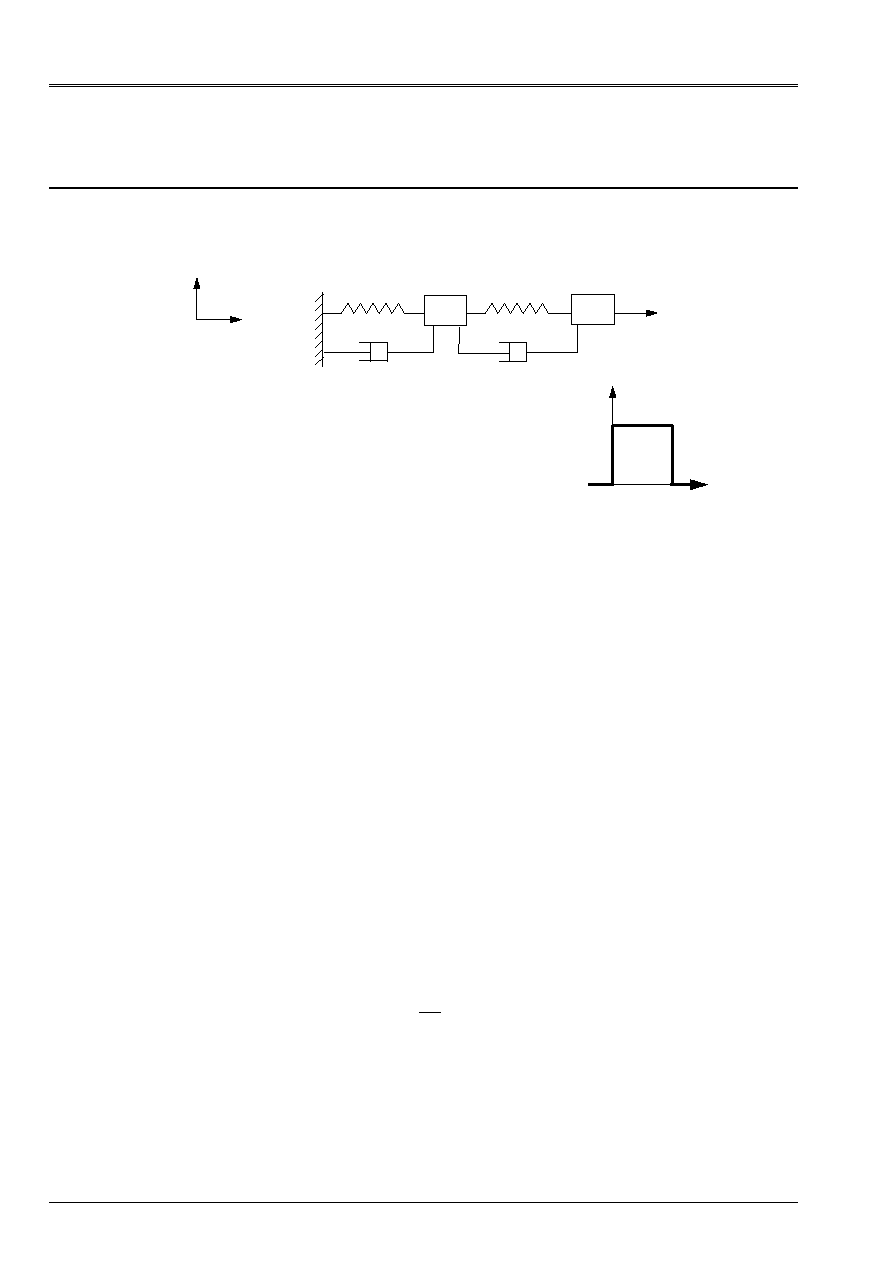
Code_Aster
®
Version
6.4
Titrate:
SDLD325 - Transitory dynamic response of a system mass-arises
Date:
16/02/04
Author (S):
E. BOYERE, T. QUESNEL
Key
:
V2.01.325-A
Page:
2/10
Manual of Validation
V2.01 booklet: Linear dynamics of the discrete systems
HT-66/04/005/A
1
Problem of reference
1.1 Geometry
y, v
X, U
With
C
F
0
(T)
m
B
K
1
m
C
K
2
C
0
1
T (S)
1.2
Material properties
Stiffnesses of connection: K = 28.10
3
N.m
1
2 cases:
·
K
1
= K/10, K
2
= 10k
·
K
1
= 10k, K
2
= K/10
Specific mass: m = 10 kg
One-way viscous damping: C = 50 kg.s
1
1.3
Boundary conditions and loadings
Embedded end A.
Force applied at end b: F (T) = F
0
(T) with
()
()
T
if
T
S
T
=
=
1
0
1
0
if not
and F
0
= 5N.
1.4 Conditions
initial
The system is at rest with T = 0:
()
U
0
0
=
and
()
dt 0
0
=
.
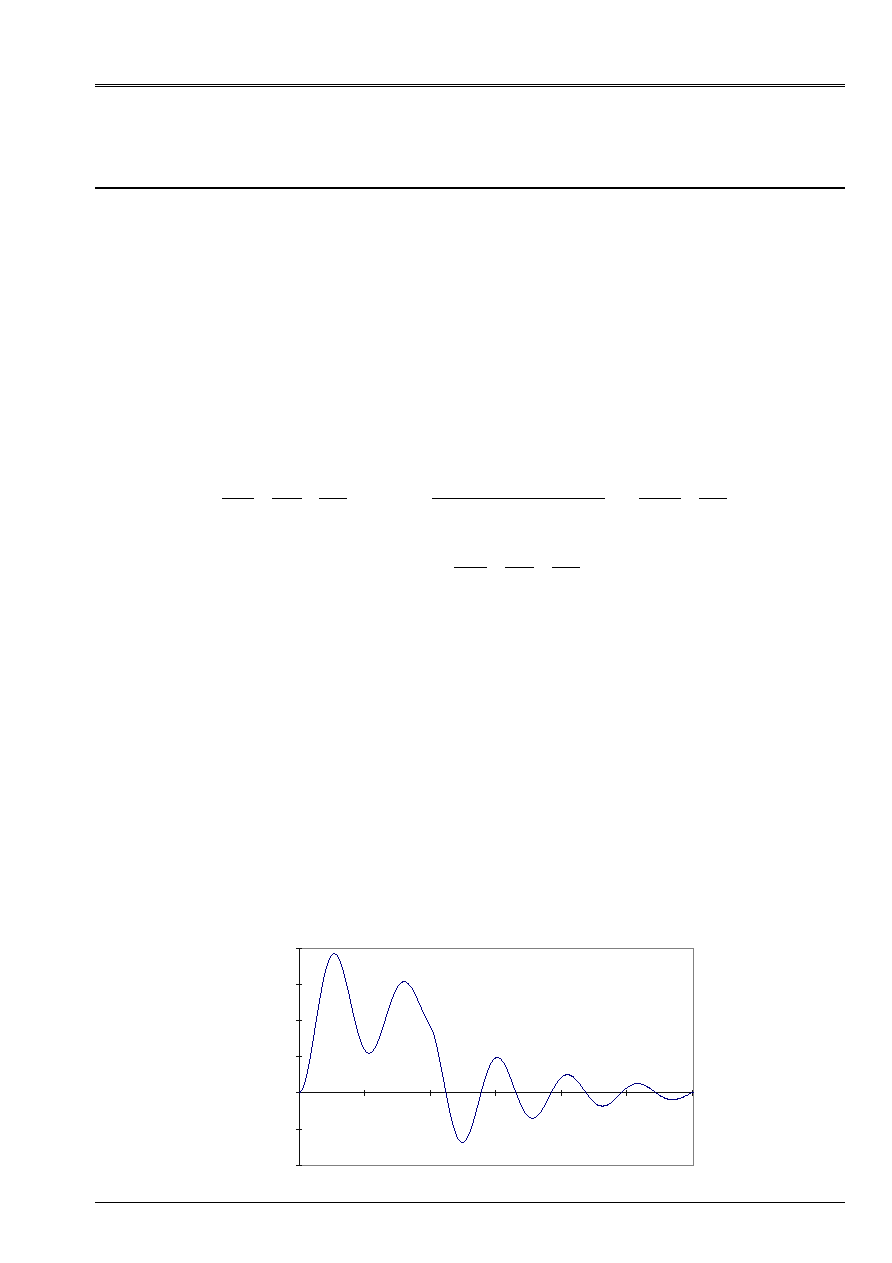
Code_Aster
®
Version
6.4
Titrate:
SDLD325 - Transitory dynamic response of a system mass-arises
Date:
16/02/04
Author (S):
E. BOYERE, T. QUESNEL
Key
:
V2.01.325-A
Page:
3/10
Manual of Validation
V2.01 booklet: Linear dynamics of the discrete systems
HT-66/04/005/A
2
Reference solution
2.1
Method of calculation used for the reference solution
The search of the transitory response of this problem to damping nonproportional can be
carried out by numerical integration in real space:
[]
{}
[]
{}
[]
{} {}
M U
C U
K U
F
N
N
N
&&
&
.
+
+
=
For that, the answer was calculated with two industrial codes:
·
PERMAS: Diagram of integration of Newmark (
= 0,25 and = 0,5) T = 10
4
S;
·
ABAQUS: Diagram of integration of Hilbert-Hugues-Taylor [bib1] (
= 0,05) T = 10
4
S;
and method of integration of
- Newmark improved [bib2]:
[] [] []
{
} {
} {
} {}
[] []
{
}
[] [] []
{}
M
T
C
T
K
U
F
F
F
M
T
K
U
M
T
C
T
K
U
N
N
N
N
N
N
2
2
2
1
2
1
2
2
3
3
2
3
2
3
+
+
=
+
+
+
-
+ -
+
-
+
+
+
+
where N, n+1, n+2 respectively indicate the calculations carried out at times T
N
, T
n+1
= T
N
+
T and T
n+2
= T
N
+2
T
where
T is the increment of appointed time.
To start, one takes:
·
0
0
1
0
U
T
U
U
U
&
-
=
-
and
·
F
F
F
-
=
-
1
0
1
2
The pitch of adopted time is
T = 10
5
S.
2.2
Results of reference
Displacement and speed of the point end B.
Displacement of the point B for k2/k1=100
- 1,60E-03
- 8,00E-04
0,00E+00
8,00E-04
1,60E-03
2,40E-03
3,20E-03
0,00
0,50
1,00
1,50
2,00
2,50
3,00
time (S)
U
B
(m)
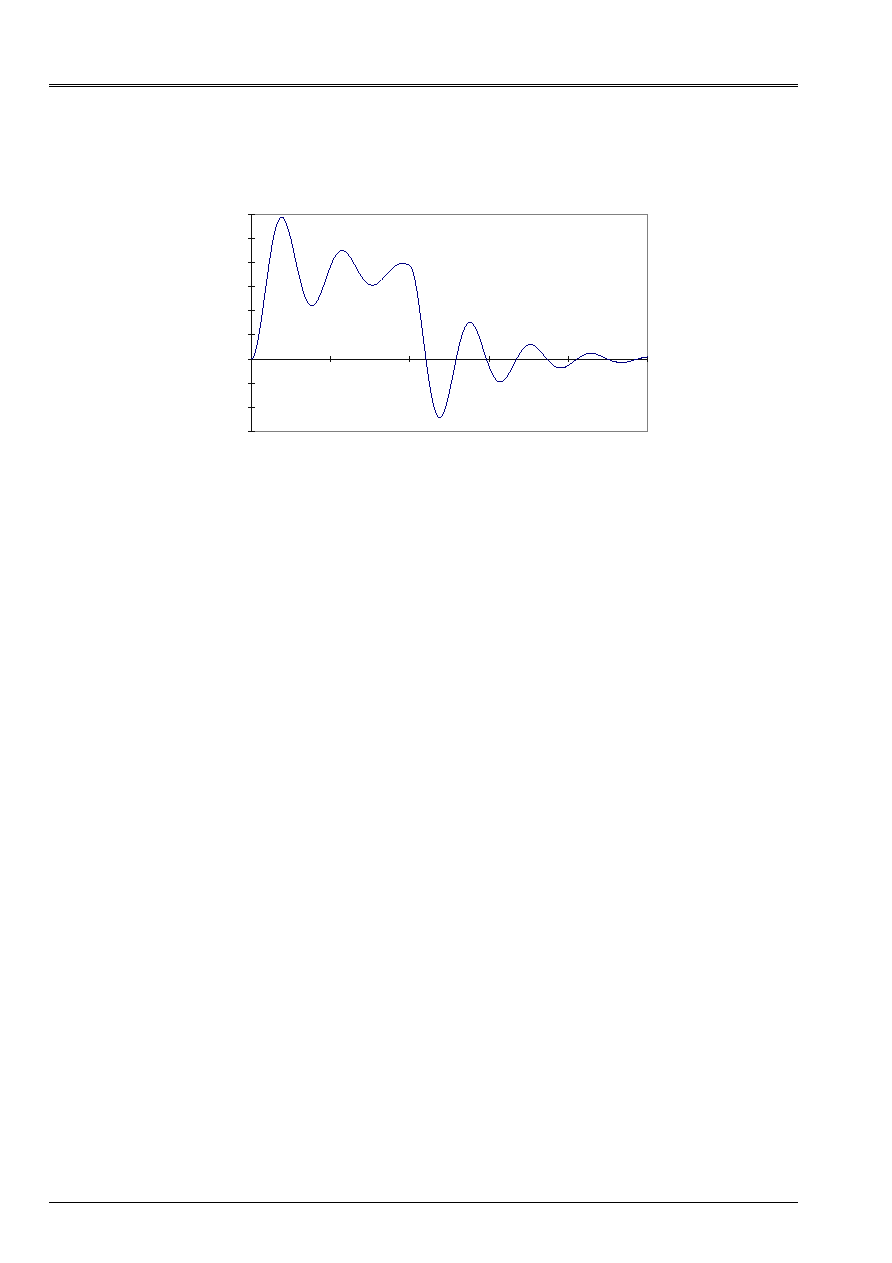
Code_Aster
®
Version
6.4
Titrate:
SDLD325 - Transitory dynamic response of a system mass-arises
Date:
16/02/04
Author (S):
E. BOYERE, T. QUESNEL
Key
:
V2.01.325-A
Page:
4/10
Manual of Validation
V2.01 booklet: Linear dynamics of the discrete systems
HT-66/04/005/A
Displacement of the point B for k2/k1=0,01
- 1,50E-03
- 1,00E-03
- 5,00E-04
0,00E+00
5,00E-04
1,00E-03
1,50E-03
2,00E-03
2,50E-03
3,00E-03
0,00
0,50
1,00
1,50
2,00
2,50
time (S)
U
B
(m)
2.3
Uncertainty on the solution
Average of numerical solutions.
2.4 References
bibliographical
[1]
H. Mr. HILBERT, T.J.R HUGUES and R.L. TAYLOR “Improved numerical dissipation for time
integration algorithms in structural dynamics “Earthquake Structural Engineering and
Dynamics, Vol.5, 1977, pp. 283-292
[2]
Structural N.M. NEWMARK “A method off computation for dynamics” Proceeding ASCE
J.Eng. Mech. DIV E-3, July 1959, pp. 67-94
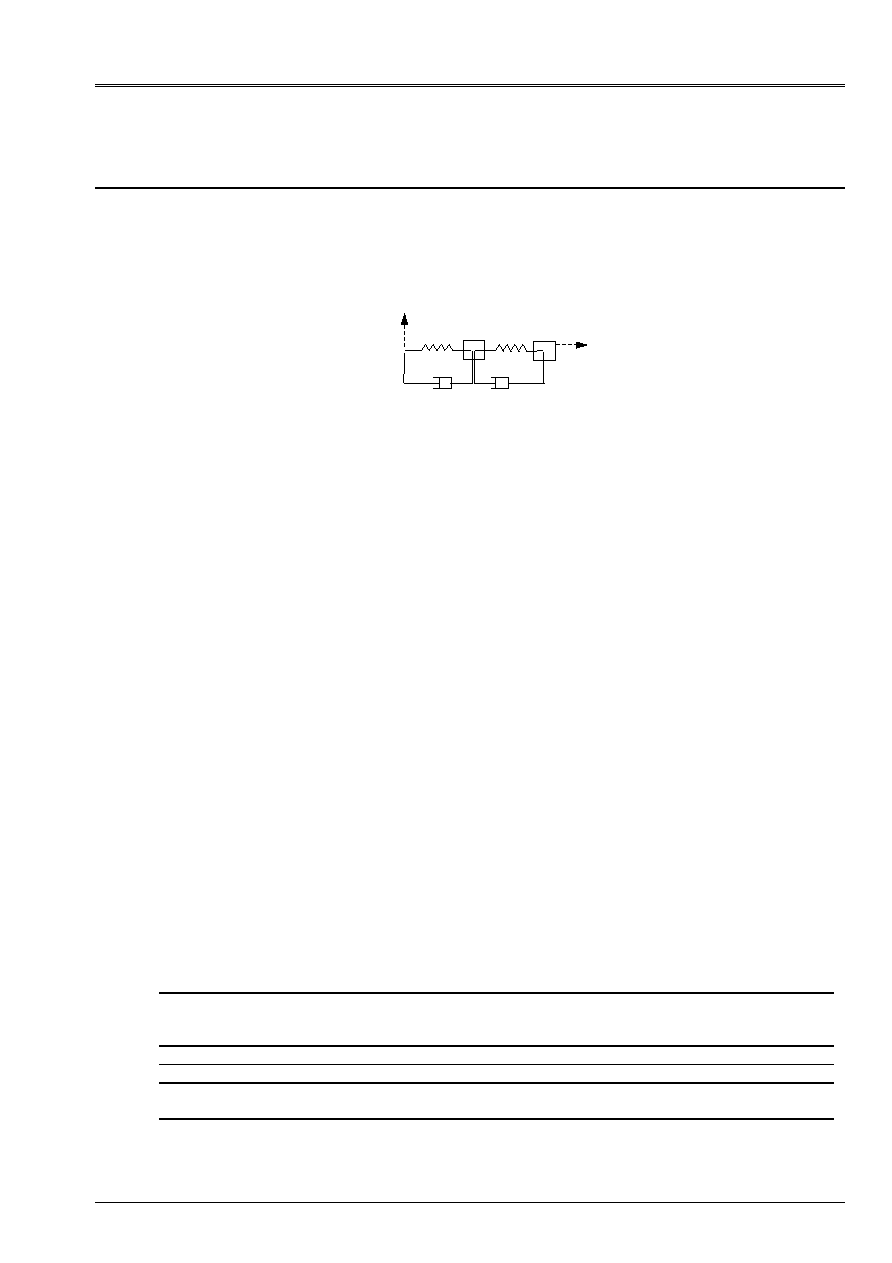
Code_Aster
®
Version
6.4
Titrate:
SDLD325 - Transitory dynamic response of a system mass-arises
Date:
16/02/04
Author (S):
E. BOYERE, T. QUESNEL
Key
:
V2.01.325-A
Page:
5/10
Manual of Validation
V2.01 booklet: Linear dynamics of the discrete systems
HT-66/04/005/A
3 Modeling
With
3.1
Characteristics of modeling
Discrete elements of rigidity, damping and mass.
B
C
N1
N2
N3
.
.
.
y
X
With
Characteristics of the elements:
DISCRETE: nodal mass
M_T_D_N
rigidity
linear
K_T_D_L
(K
N1N2
= K/10, K
N2 N3
= 10k)
damping
linear
A_T_D_L
Boundary conditions: with the node N1 DDL_IMPO DX = DY = DZ = 0.
Names of the nodes: WITH = N1, C = N2, B = N3.
Methods of calculation:
·
Integration on physical space with Newmark (
= 0,25, = 0,5)
No time
T = 10
3
S
·
Integration on the modal basis supplements with Euler
No time
T = 10
3
S then modal recombination
·
Integration on the modal basis supplements with
T adaptive
No initial time
T = 10
3
S then modal recombination
Duration of observation: 3 S.
3.2
Characteristics of the mesh
A number of nodes: 3
A number of meshs and type: 2 meshs SEG2
3.3
Functionalities tested
Controls
DISCRETE AFFE_CARA_ELEM
NET “K_T_D_L'
NET
“A_T_D_L'
NODE
“M_T_D_N'
MODE_ITER_SIMULT
OPTION: “CENTER”
DYNA_LINE_TRAN NEWMARK
MATR_AMOR
DYNA_TRAN_MODAL EULER
AMOR_GENE
ADAPT
REST_BASE_PHYS

Code_Aster
®
Version
6.4
Titrate:
SDLD325 - Transitory dynamic response of a system mass-arises
Date:
16/02/04
Author (S):
E. BOYERE, T. QUESNEL
Key
:
V2.01.325-A
Page:
6/10
Manual of Validation
V2.01 booklet: Linear dynamics of the discrete systems
HT-66/04/005/A
4
Results of modeling A
4.1 Values
tested
·
Displacement (m) of the point B
Displacement displacement
Displacement
Time Reference
Aster Difference
Aster Difference
Aster Difference
(S)
NEWMARK
(%)
EULER
(%)
ADAPT
(%)
0,27 3,0927 E-3 3,09263 E-3
- 0,002
3,09254 E-3
- 0,005
3,09278 E-3
0,003
0,53 8,7953 E-4 8,79902 E-4
0,042
8,79515 E-4
- 0,002
8,79583 E-4
0,006
0,80 2,4669 E-3 2,46677 E-3
- 0,005
2,46666 E-4
- 0,010
2,46688 E-4
- 0,001
1,25 - 1,0980 E-3 - 1,09829 E-3
0,026
- 1,09248 E-4
- 0,502
- 1,09844 E-4
0,040
1,51 7,8754 E-4 7,87625 E-4
0,011
7,82702 E-4
- 0,614
7,87760 E-4
0,028
1,78 - 5,6508 E-4 - 5,65131 E-4
0,009
- 5,61709 E-4
- 0,597
- 5,65265 E-4
0,033
2,05 4,0502 E-4 4,05155 E-4
0,033
4,02581 E-4
- 0,602
4,05168 E-4
0,037
2,31 - 2,9012 E-4 - 2,90070 E-4
- 0,017
- 2,88252 E-4
- 0,644
- 2,90192 E-4
0,025
2,58 2,0831 E-4 2,08323 E-4
0,006
2,06960 E-4
- 0,648
2,08376 E-4
0,032
2,85 - 1,4943 E-4 - 1,49462 E-4
0,022
- 1,48425 E-4
- 0,672
- 1,49477 E-4
0,032
·
Speed (Mr. S
1
) of the point B
Speed Speed Speed
Time Reference
Aster Difference
Aster Difference
Aster Difference
(S)
NEWMARK
(%)
EULER
(%)
ADAPT
(%)
0,11 1,8347 E-2 1,82400 E-2
- 0,583
1,84067 E-2
0,326
1,83510 E-2
0,022
0,39 - 1,3140 E-2 - 1,31120 E-2
- 0,213
1,31472 E-2
0,055
- 1,31407 E-2
0,006
0,66 9,3509 E-3 9,34550 E-3
- 0,058
9,36556 E-3
0,157
9,35335 E-2
0,026
0,93 - 6,7080 E-3 - 6,71303 E-3
0,075
- 6,70399 E-3
- 0,060
- 6,70788 E-3
- 0,002
1,11 - 1,5863 E-2 - 1,57872 E-2
- 0,478
- 1,57871 E-2
- 0,478
- 1,58789 E-2
0,100
1,37 1,1157 E-2 1,12034 E-2
0,416
1,10701 E-2
- 0,779
1,11521 E-2
- 0,044
1,64 - 7,9838 E-3 - 7,97210 E-3
- 0,147
- 7,94957 E-3
- 0,429
- 7,98789 E-3
0,051
1,90 5,7108 E-3 5,71217 E-3
0,024
5,67244 E-3
- 0,672
5,71139 E-3
0,010
2,17 - 4,0998 E-3 - 4,09898 E-3
- 0,020
- 4,07584 E-3
- 0,584
- 4,10120 E-3
0,034
2,44 2,9405 E-3 2,94126 E-3
0,026
2,92375 E-3
- 0,576
2,94154 E-3
0,035
2,71 - 2,1073 E-3 - 2,10817 E-3
0,041
- 2,09494 E-3
- 0,586
- 2,10808 E-3
0,037
2,97 1,5105 E-3 1,51036 E-3
- 0,009
1,50087 E-3
- 0,638
1,51084 E-3
0,022
4.2 Remarks
The results are tested on the level of the respective peaks of displacement and speed where values
are most significant.
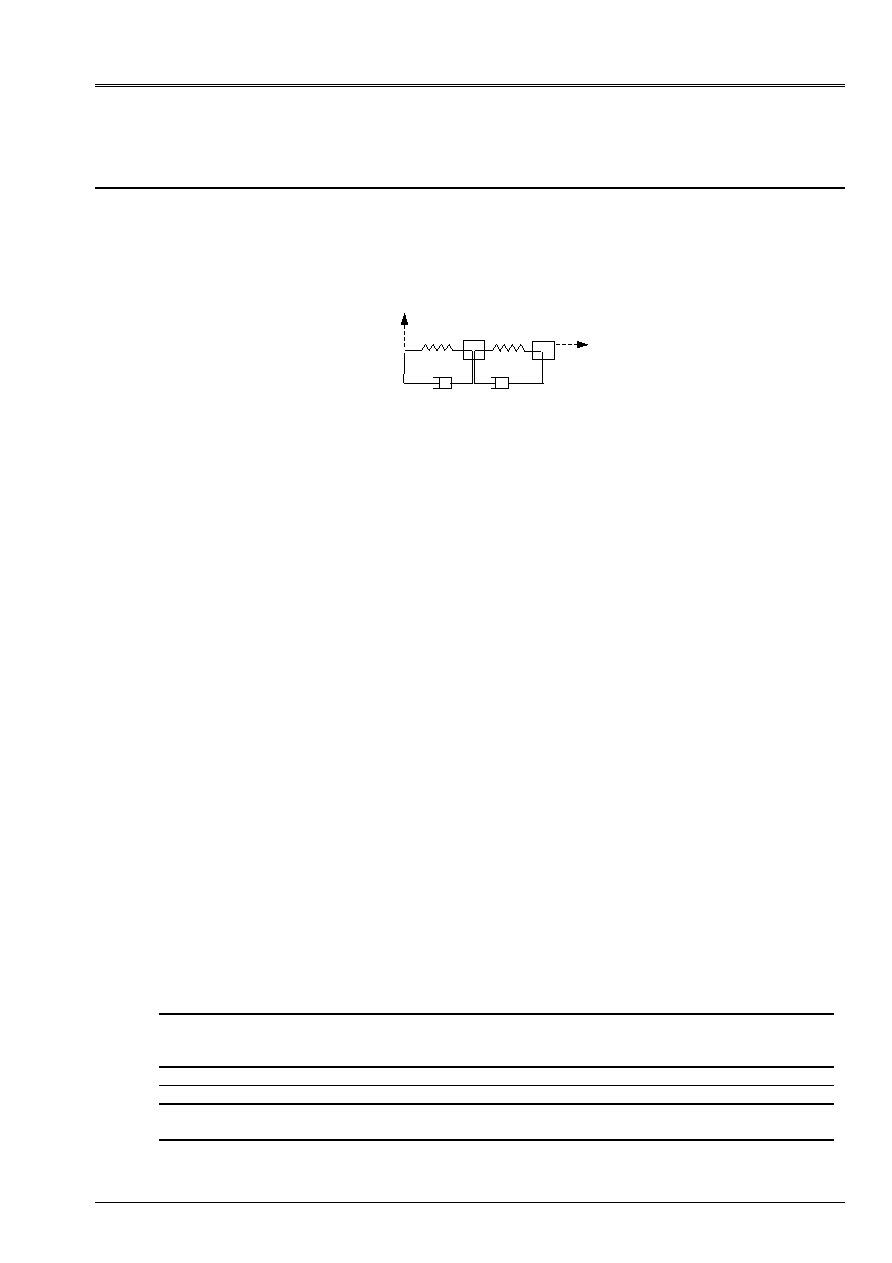
Code_Aster
®
Version
6.4
Titrate:
SDLD325 - Transitory dynamic response of a system mass-arises
Date:
16/02/04
Author (S):
E. BOYERE, T. QUESNEL
Key
:
V2.01.325-A
Page:
7/10
Manual of Validation
V2.01 booklet: Linear dynamics of the discrete systems
HT-66/04/005/A
5 Modeling
B
5.1
Characteristics of modeling
Discrete elements of rigidity, damping and mass.
B
C
N1
N2
N3
.
.
.
y
X
With
Characteristics of the elements:
DISCRETE: nodal mass
M_T_D_N
rigidity
linear
K_T_D_L
(K
N1N2
= 10k, K
N2 N3
= K/10)
damping
linear
A_T_D_L
Boundary conditions: with the node N1 DDL_IMPO DX=DY=DZ=0.
Names of the nodes: WITH = N1, C = N2, B = N3.
Methods of calculation:
·
Integration on physical space with Newmark (
= 0,25, = 0,5)
No time
T = 10
3
S
·
Integration on the modal basis supplements with Euler
No time
T = 10
3
S then modal recombination
·
Integration on the modal basis supplements with
T adaptive
No initial time
T = 10
3
S then modal recombination
Duration of observation: 2,5 S.
5.2
Characteristics of the mesh
A number of nodes: 3
A number of meshs and type: 2 meshs SEG2
5.3 Functionalities
tested
Controls
DISCRETE AFFE_CARA_ELEM
NET “K_T_D_L'
NET
“A_T_D_L'
NODE
“M_T_D_N'
MODE_ITER_SIMULT
OPTION: “CENTER”
DYNA_LINE_TRAN NEWMARK
MATR_AMOR
DYNA_TRAN_MODAL EULER
AMOR_GENE
ADAPT
REST_BASE_PHYS

Code_Aster
®
Version
6.4
Titrate:
SDLD325 - Transitory dynamic response of a system mass-arises
Date:
16/02/04
Author (S):
E. BOYERE, T. QUESNEL
Key
:
V2.01.325-A
Page:
8/10
Manual of Validation
V2.01 booklet: Linear dynamics of the discrete systems
HT-66/04/005/A
6
Results of modeling B
6.1 Values
tested
·
Displacement (m) of the point B
Displacement displacement
Displacement
Time Reference
Aster Difference
Aster Difference
Aster Difference
(S)
NEWMARK
(%)
EULER
(%)
ADAPT
(%)
0,19 2,9334 E-3 2,93325 E-3
- 0,005
2,93308 E-3
- 0,011
2,93355 E-3
0,005
0,38 1,0959 E-3 1,09605 E-3
0,014
1,09625 E-3
0,032
1,09573 E-3
- 0,015
0,57 2,2468 E-3 2,24664 E-3
- 0,007
2,24647 E-3
- 0,015
2,24690 E-3
0,005
0,76 1,5260 E-3 1,52615 E-3
0,010
1,52627 E-3
0,017
1,52595 E-3
- 0,003
0,95 1,9773 E-3 1,97725 E-3
- 0,002
1,97718 E-3
- 0,006
1,97739 E-3
0,005
1,19 - 1,2107 E-3 - 1,21113 E-3
0,036
- 1,20839 E-3
- 0,191
- 1,21142 E-3
0,060
1,38 7,5880 E-4 7,59030 E-4
0,030
7,56994 E-4
- 0,238
7,59422 E-4
0,082
1,57 - 4,7553 E-4 - 4,75637 E-4
0,023
- 4,74180 E-4
- 0,284
- 4,75974 E-4
0,093
1,76 2,9796 E-4 2,98011 E-4
0,017
2,97002 E-4
- 0,322
2,98273 E-4
0,105
1,95 - 1,8668 E-4 - 1,86695 E-4
0,008
- 1,86012 E-4
- 0,358
- 1,86890 E-4
0,113
2,14 1,1694 E-4 1,16943 E-4
0,002
1,16489 E-4
- 0,385
1,17076 E-4
0,116
2,33 - 7,3246 E-5 - 7,32415 E-5
- 0,006
- 7,29453 E-5
- 0,411
- 7,33309 E-5
0,116
·
Speed (Mr. S
1
) of the point B
Speed Speed Speed
Time Reference
Aster Difference
Aster Difference
Aster Difference
(S)
NEWMARK
(%)
EULER
(%)
ADAPT
(%)
0,09 2,4261 E-2 2,42719 E-2
0,045
2,42772 E-2
0,067
2,42563 E-2
- 0,019
0,28 - 1,5210 E-2 - 1,52159 E-2
0,039
- 1,52111 E-2
0,007
- 1,52087 E-2
- 0,009
0,47 9,5332 E-3 9,53598 E-3
0,029
9,52994 E-3
- 0,034
9,53446 E-3
0,013
0,66 - 5,9745 E-3 - 5,97590 E-3
0,023
- 5,97018 E-3
- 0,072
- 5,97614 E-3
0,028
0,85 3,7438 E-3 3,74438 E-3
0,015
3,73979 E-3
- 0,107
3,74519 E-3
0,037
1,08 - 2,6037 E-2 - 2,60274 E-2
- 0,037
- 2,59908 E-2
- 0,177
- 2,60402 E-2
0,012
1,27 1,6302 E-2 1,62945 E-2
- 0,046
1,62664 E-2
- 0,218
1,63040 E-2
0,013
1,46 - 1,0204 E-2 - 1,01990 E-2
- 0,049
- 1,01797 E-2
- 0,238
- 1,02065 E-2
0,024
1,66 6,3887 E-3 6,39331 E-3
0,072
6,37778 E-3
- 0,171
6,39477 E-3
0,095
1,85 - 4,0059 E-3 - 4,00851 E-3
0,065
3,99659 E-3
- 0,232
- 4,01048 E-3
0,114
2,04 2,5114 E-3 2,51292 E-3
0,061
2,50425 E-3
- 0,285
2,51465 E-3
0,130
2,23 - 1,5743 E-3 - 1,57516 E-3
0,055
- 1,56902 E-3
- 0,355
- 1,57652 E-3
0,141
2,42 9,8676 E-4 9,87206 E-4
0,045
9,82986 E-4
- 0,382
9,88220 E-4
0,148
6.2 Remarks
The results are tested on the level of the respective peaks of displacement and speed where values
are most significant.

Code_Aster
®
Version
6.4
Titrate:
SDLD325 - Transitory dynamic response of a system mass-arises
Date:
16/02/04
Author (S):
E. BOYERE, T. QUESNEL
Key
:
V2.01.325-A
Page:
9/10
Manual of Validation
V2.01 booklet: Linear dynamics of the discrete systems
HT-66/04/005/A
7
Summary of the results
For two modelings, the results are precise with an error lower than 1%.
Integration on modal basis with a diagram with adaptive pitch gives the best results for one
restricted calculating time.
For information, here various times CPU To use used for the resolution of modelings A and
B.
CPU To use
DYNA_LINE_TRAN DYNA_TRAN_MODAL DYNA_TRAN_MODAL
(dryness) (NEWMARK) (EULER) (Adaptive)
Modeling A
69,82
0,50 *
0,81 *
Modeling B
57,29
0,42 *
0,50 *
(*):
MODE_ITER_SIMULT
= 0,23 S: calculating time of the modal base to add.

Code_Aster
®
Version
6.4
Titrate:
SDLD325 - Transitory dynamic response of a system mass-arises
Date:
16/02/04
Author (S):
E. BOYERE, T. QUESNEL
Key
:
V2.01.325-A
Page:
10/10
Manual of Validation
V2.01 booklet: Linear dynamics of the discrete systems
HT-66/04/005/A
Intentionally white left page.









